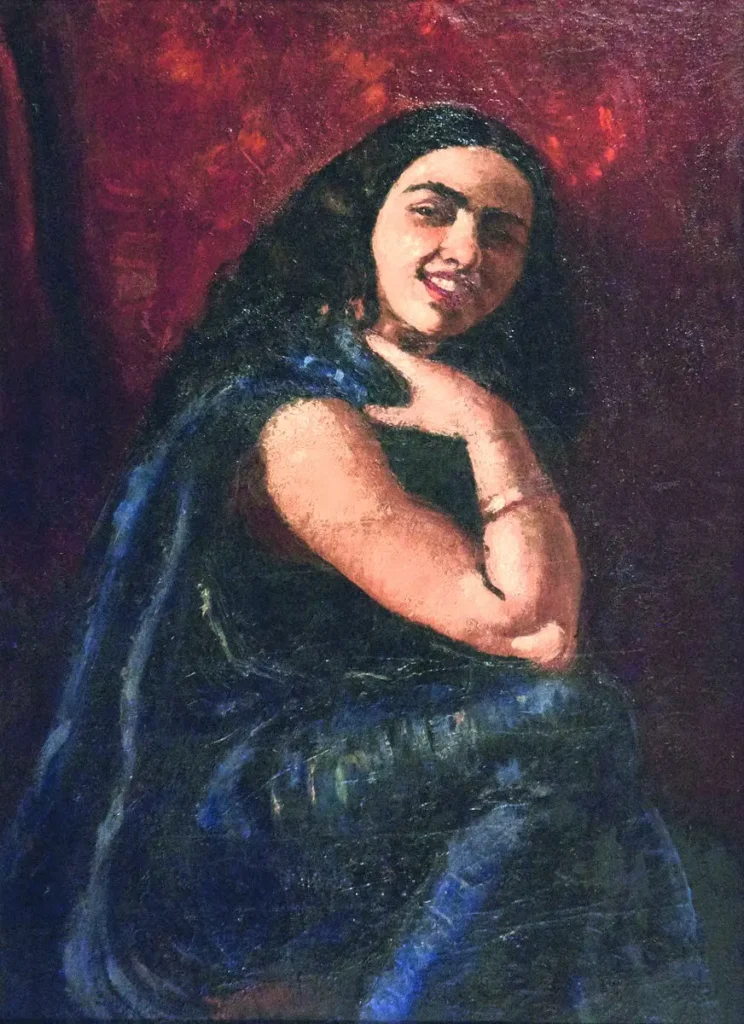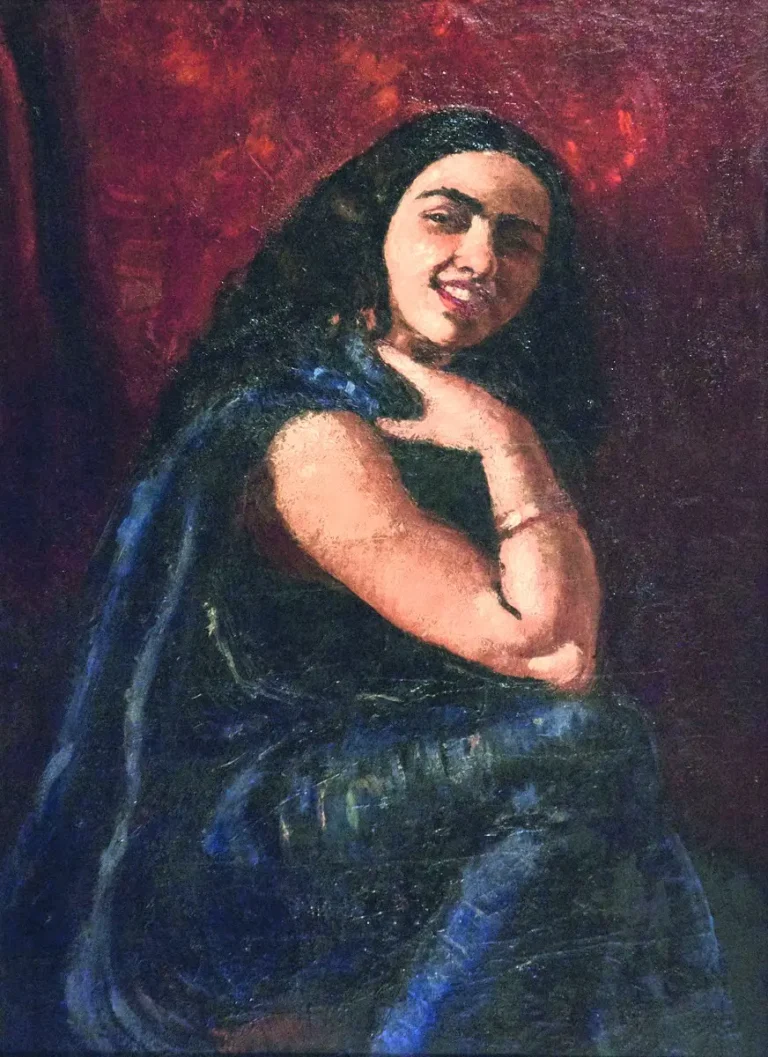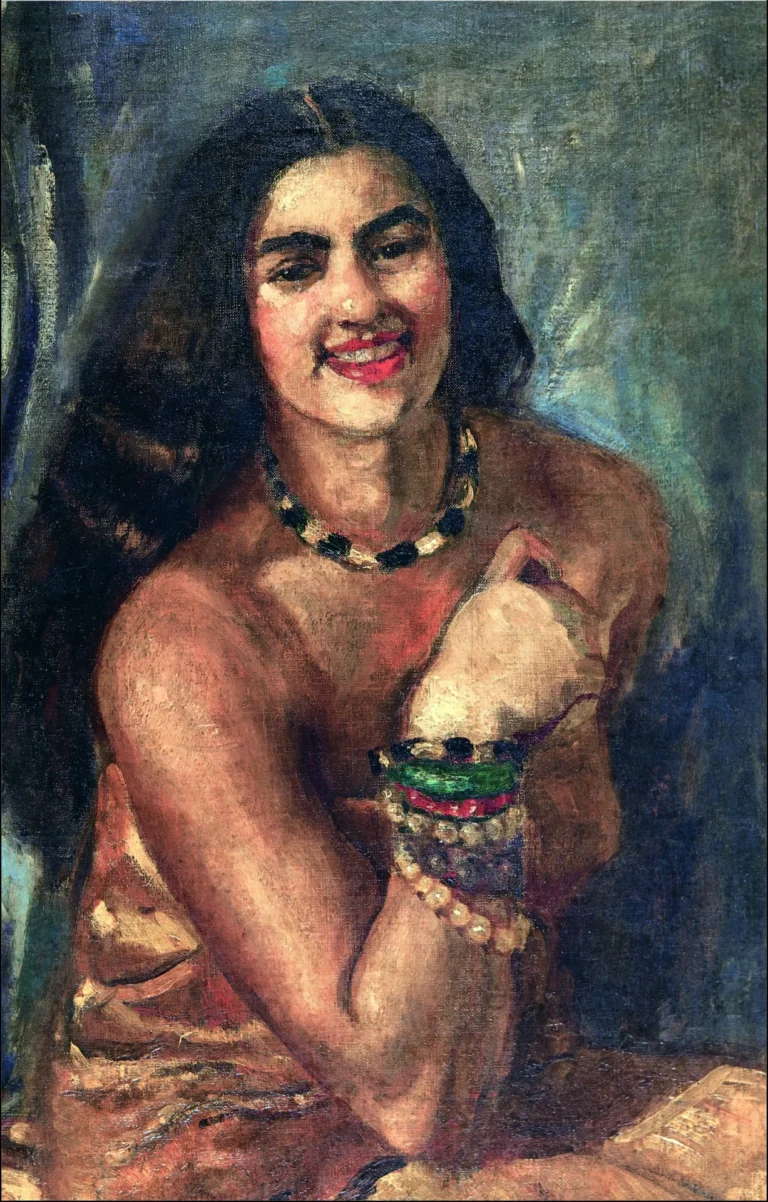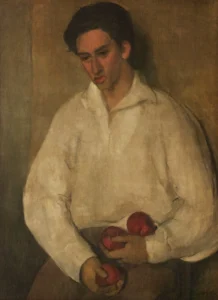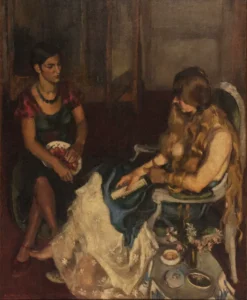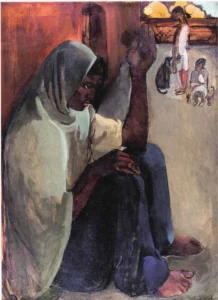Amrita Sher-Gil Self Portrait 6 (1930)
In 'Self Portrait 6,' painted in 1930, Amrita Sher-Gil presents herself as a vibrant and charming young woman during her time in Paris at the École Nationale des Beaux-Arts. This piece exemplifies her early experimentation with thick layers of paint, highlighting her emerging style and emotional depth. The self-portrait, part of a series she created, captures a unique moment in her artistic evolution, illustrating Sher-Gil's journey as an innovator in the art scene.
Year 1930
About the Artwork
Amrita Sher-Gil, often regarded as one of India's most impactful modern artists, painted 'Self Portrait 6' in 1930 while studying in Paris. Known for her expressive brushwork and vibrant color palette, Sher-Gil utilized thick layers of pigments in this piece, reflecting her evolving technique and artistic identity. This self-portrait is part of a series she created during this formative period, allowing her to explore different facets of her personality and emotional landscape. The portrait not only showcases her talent but also symbolizes her search for individuality and her quest to bridge Eastern and Western artistic traditions. Sher-Gil's ability to convey mood and character through her work set her apart and laid the groundwork for her later masterpieces.
Did You Know
Amrita Sher-Gil is often considered one of the first modern Indian female artists, and her works reflect a unique blend of Eastern and Western influences, paving the way for future generations of artists in India.
Sher-Gil admired Vincent van Gogh, and his influence is evident in her bold use of color and expressive brushwork. Her artistic exploration during her time in Paris was significantly inspired by his techniques.
Despite her short life, which ended at the age of 28, Sher-Gil’s legacy endures. Her artworks, including ‘Self Portrait 6,’ are celebrated for their innovation and emotional depth, contributing to discussions on feminism and identity in art.




